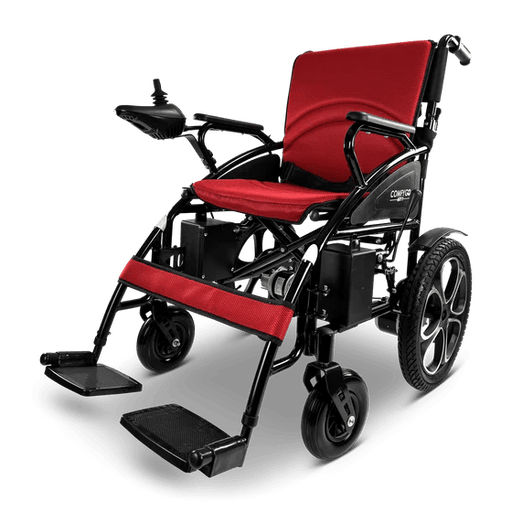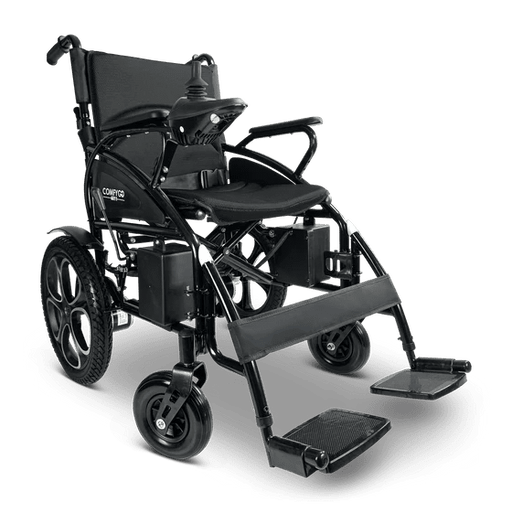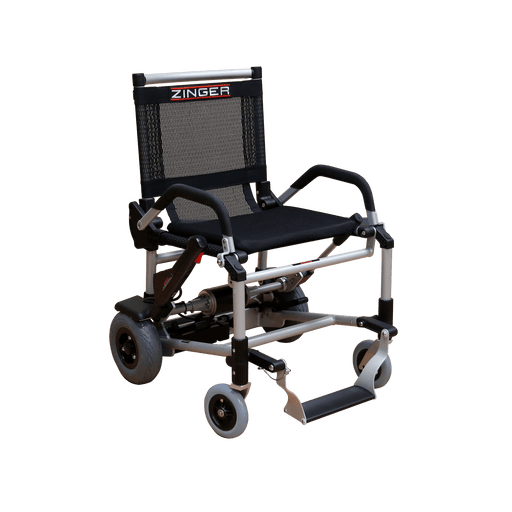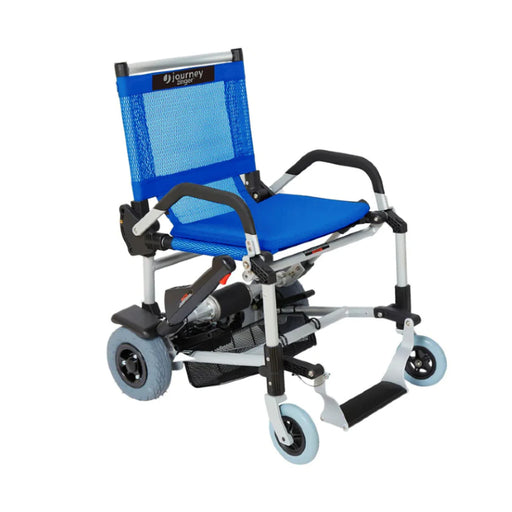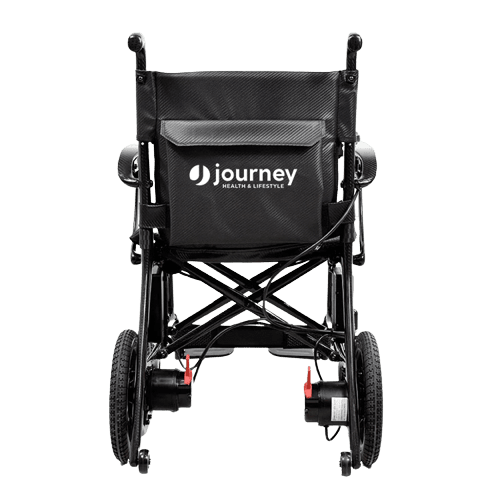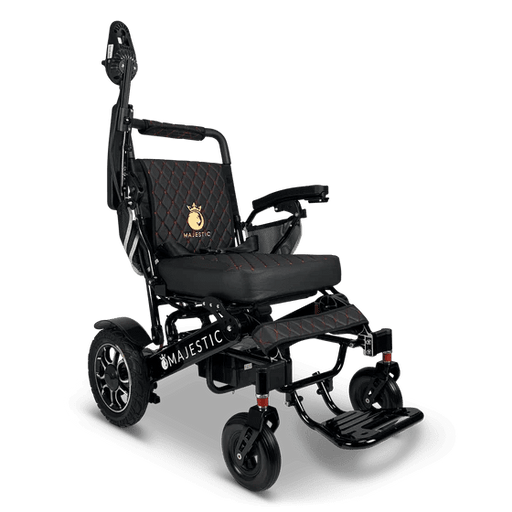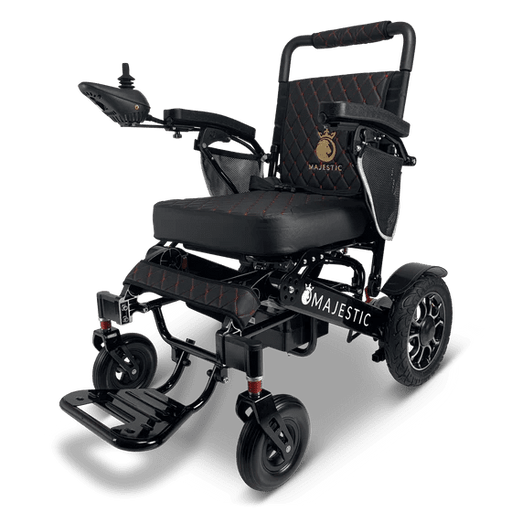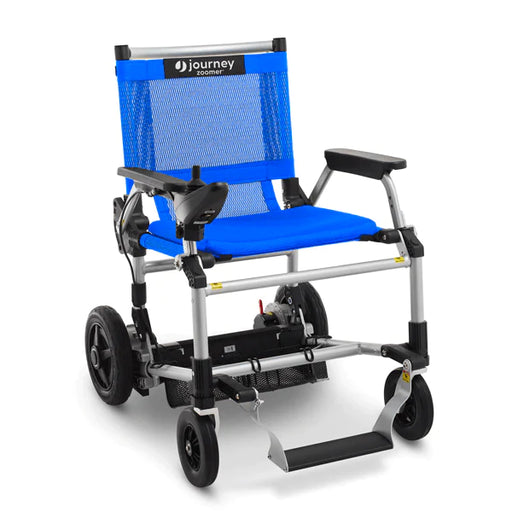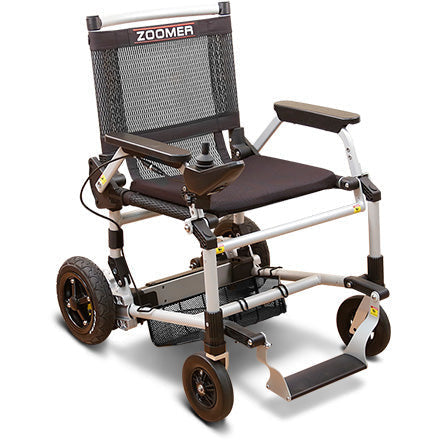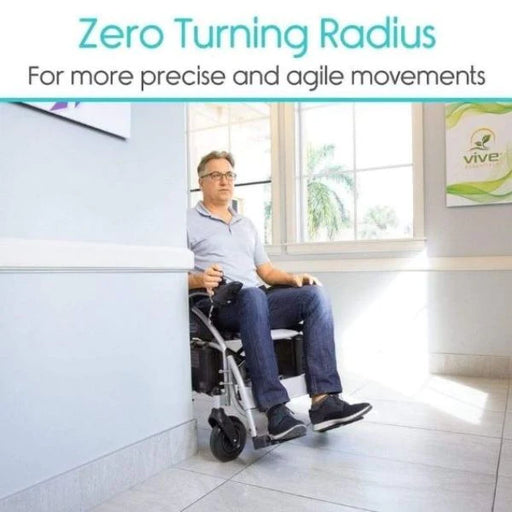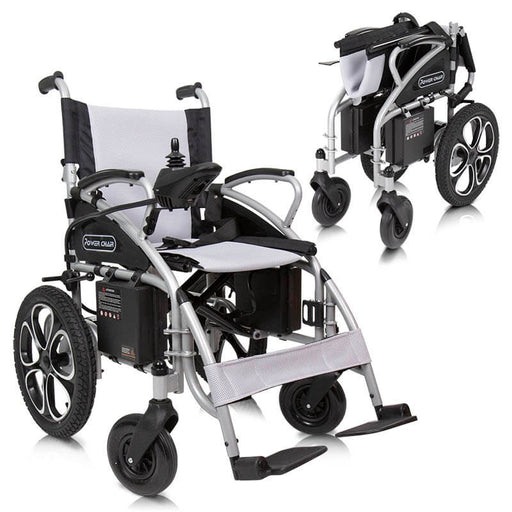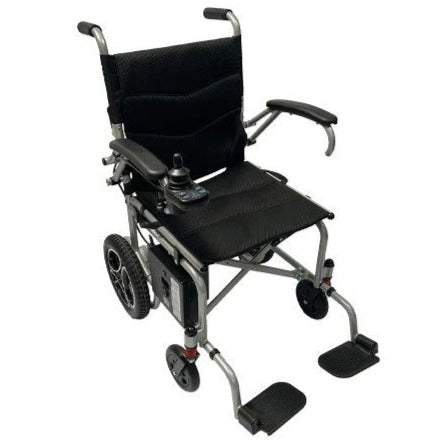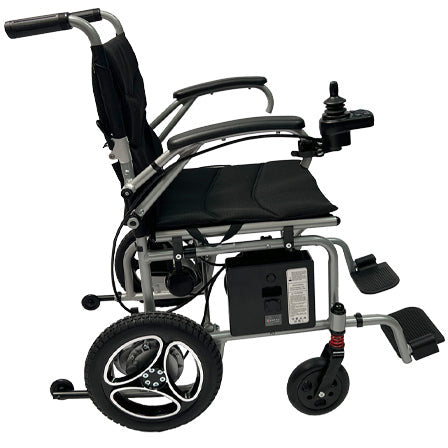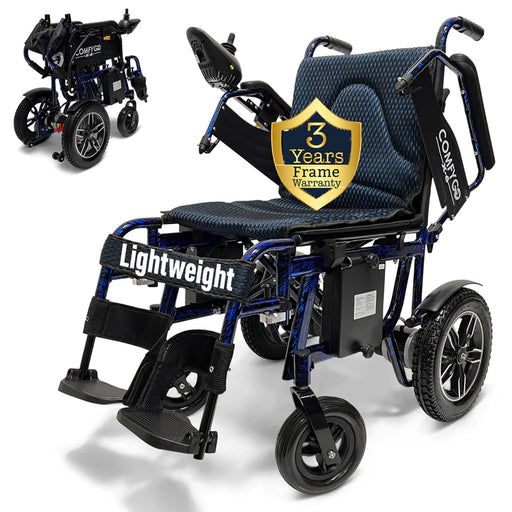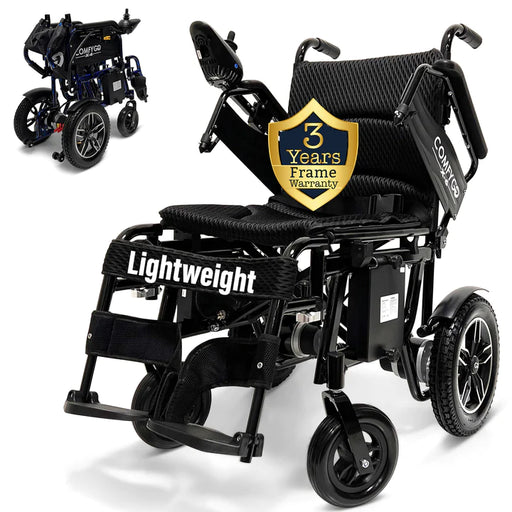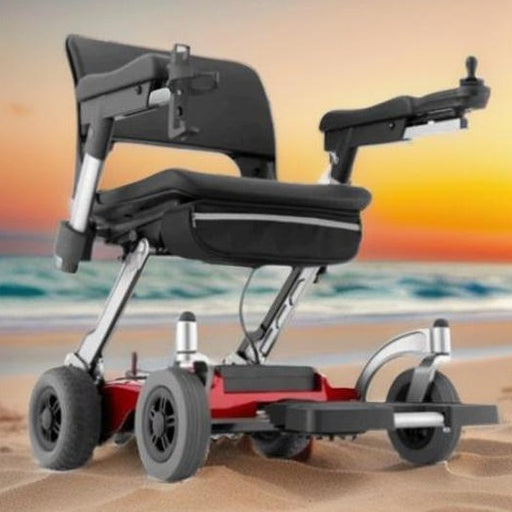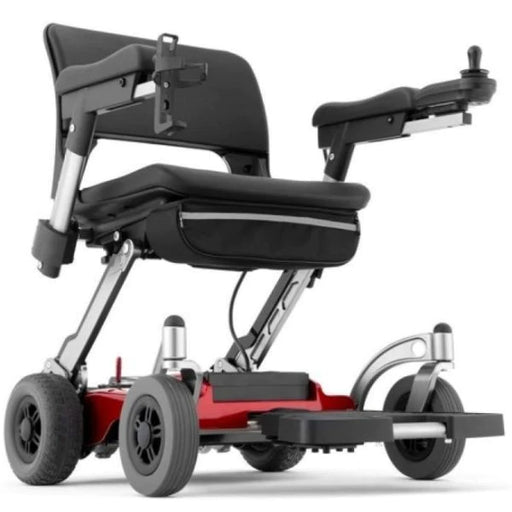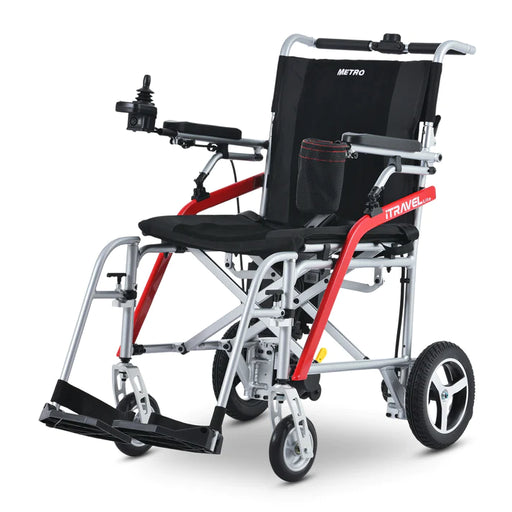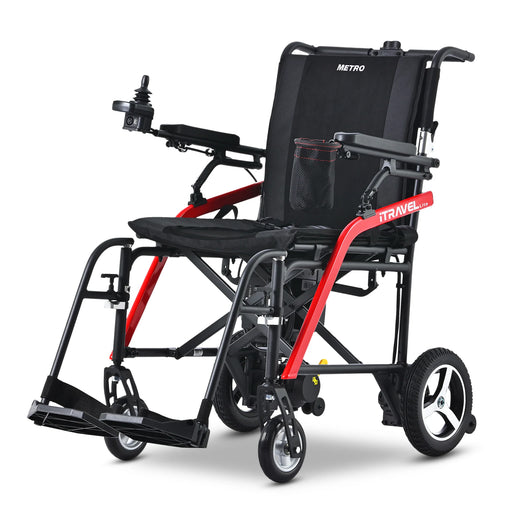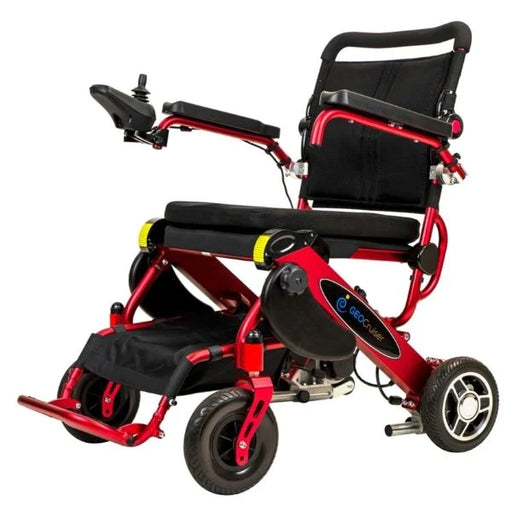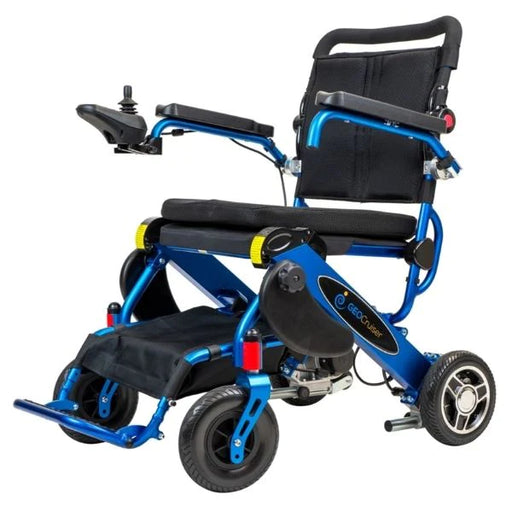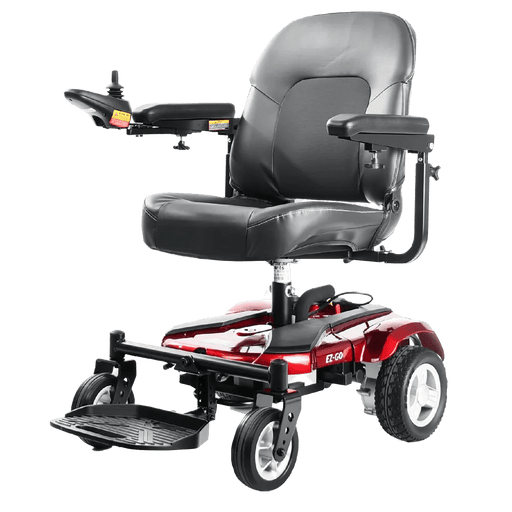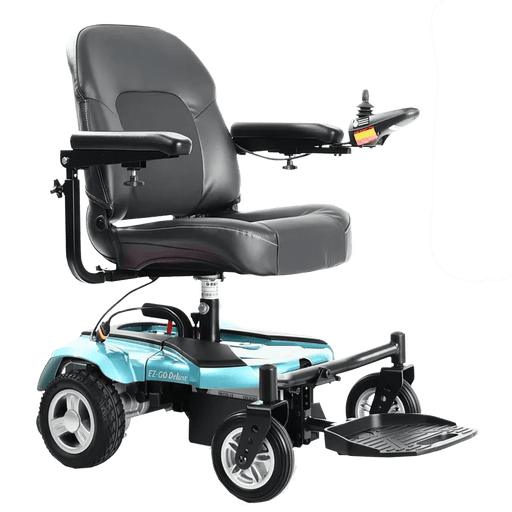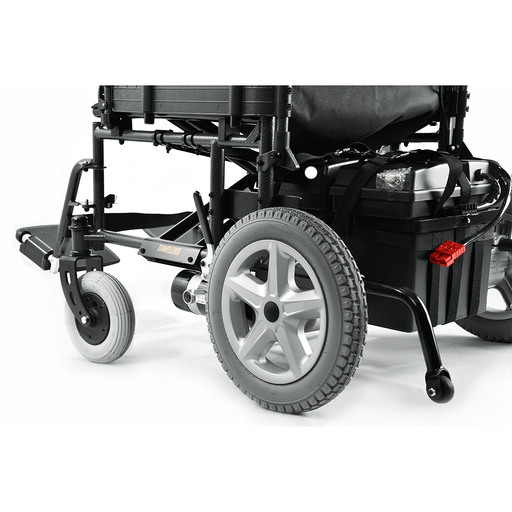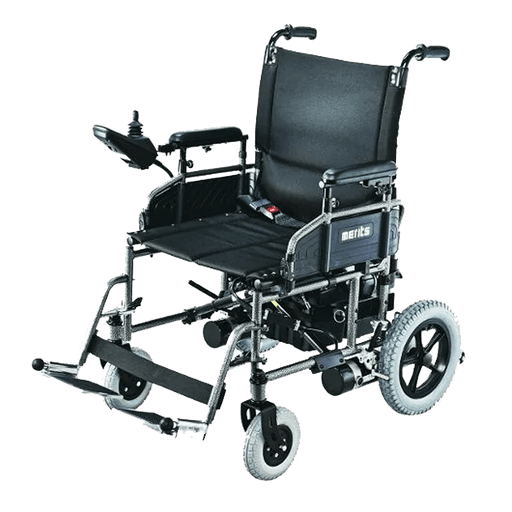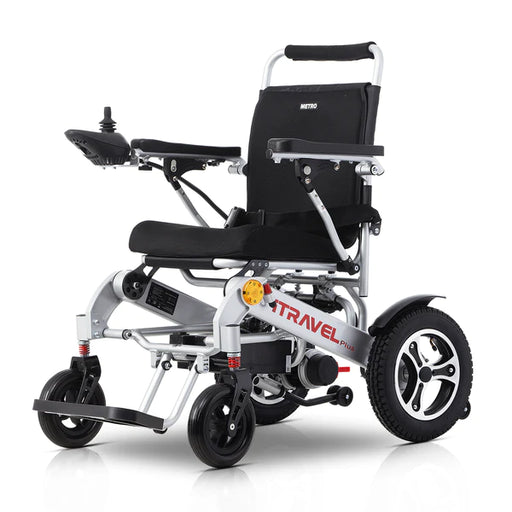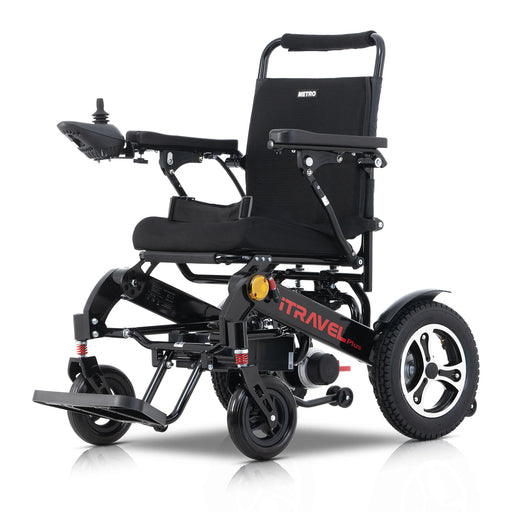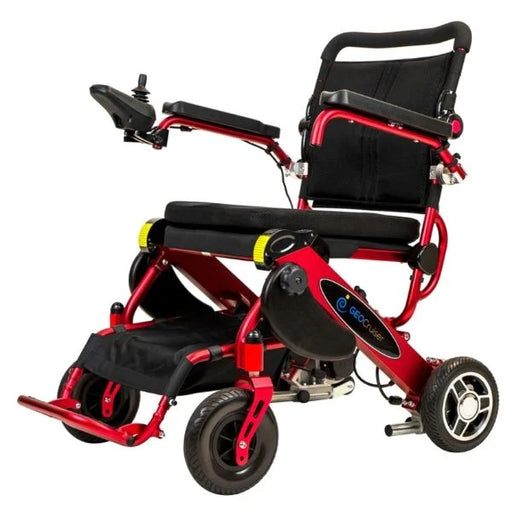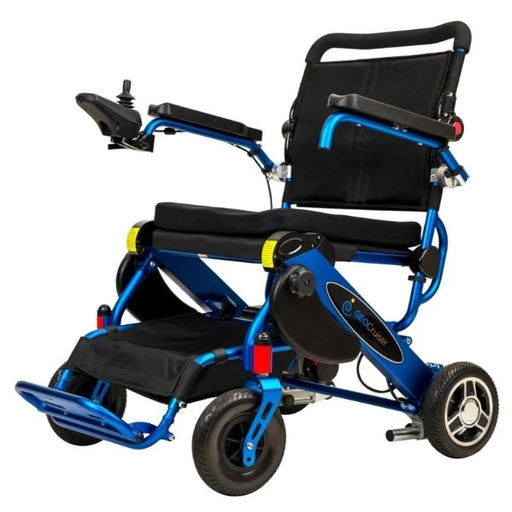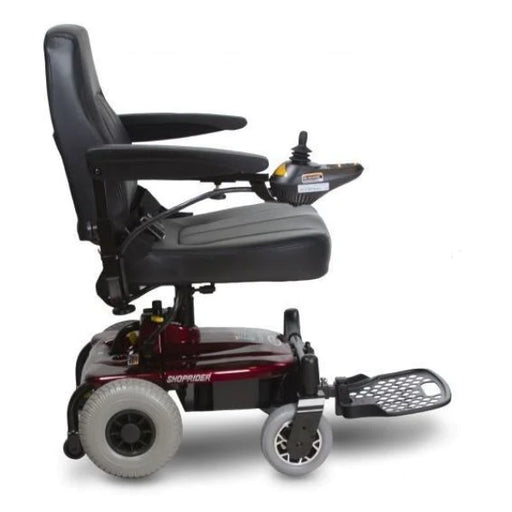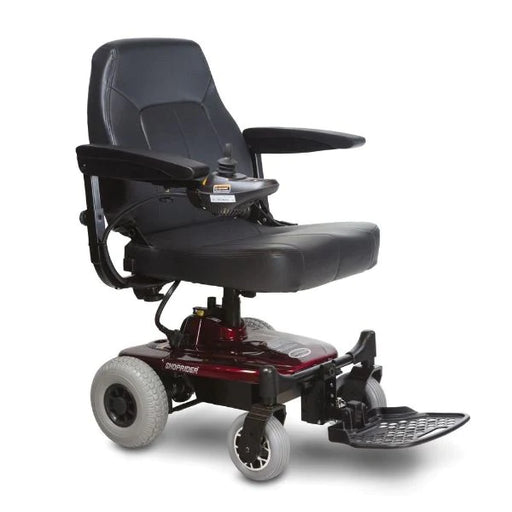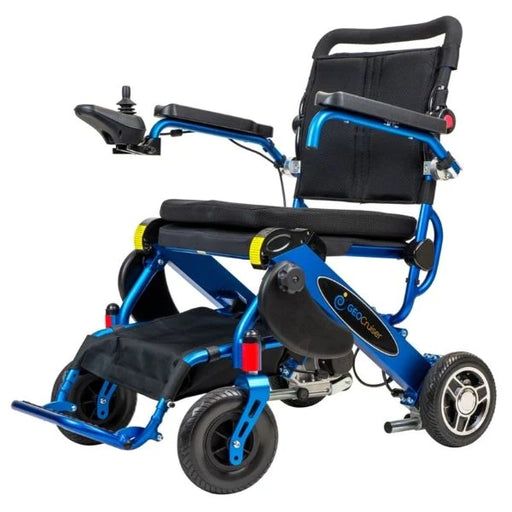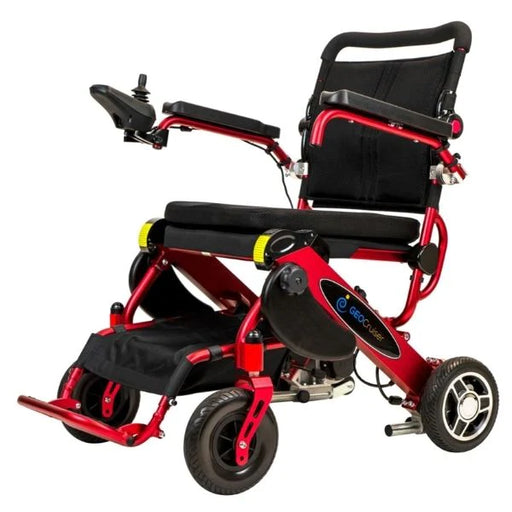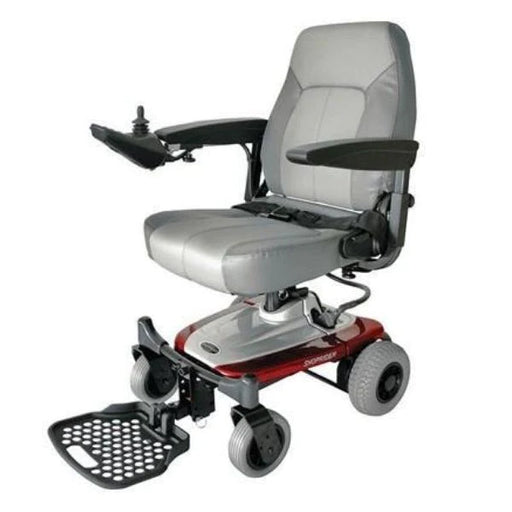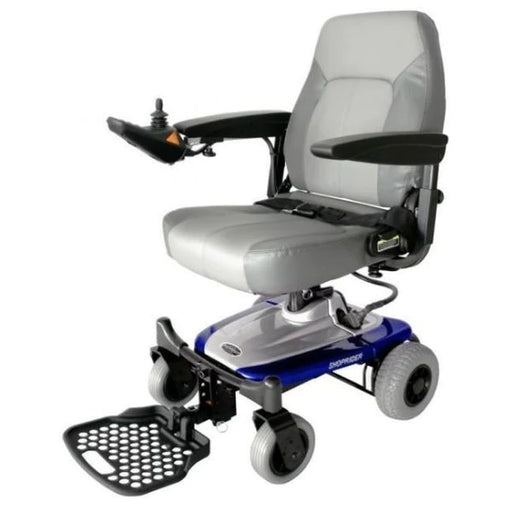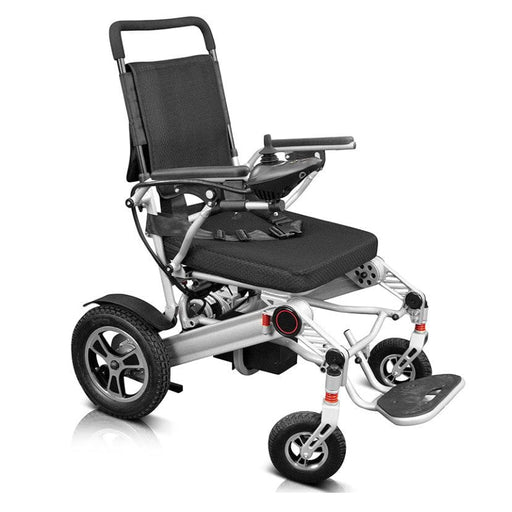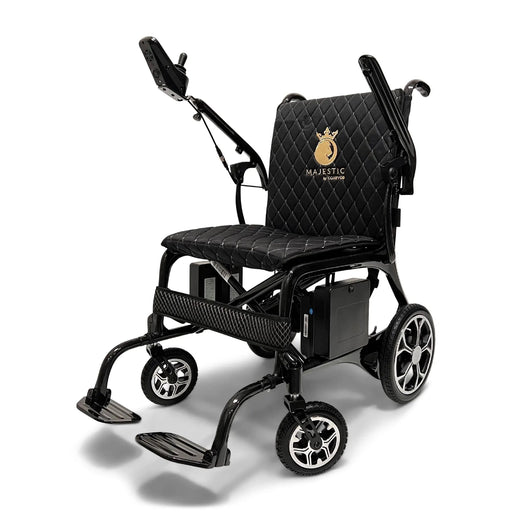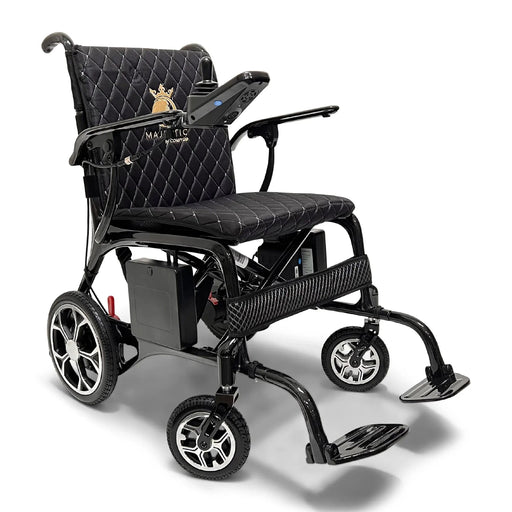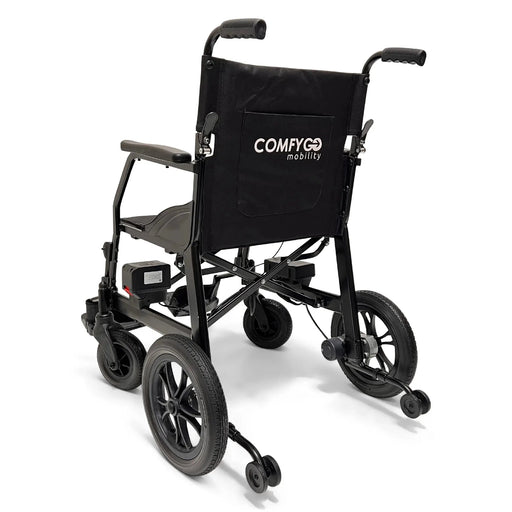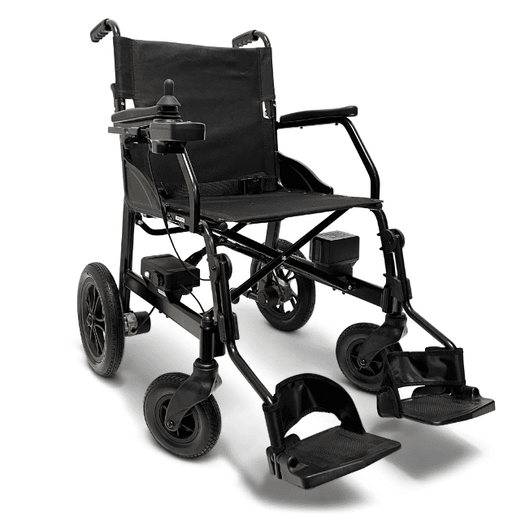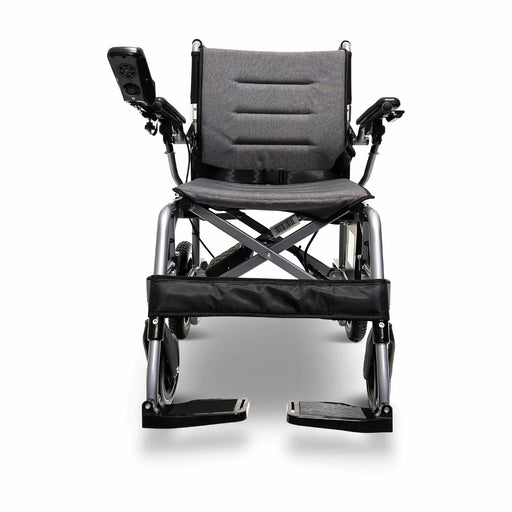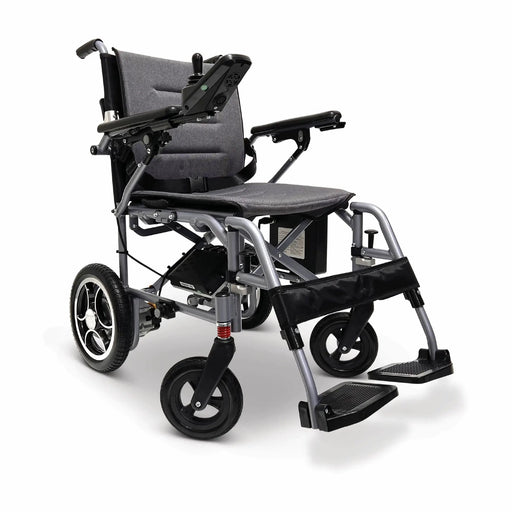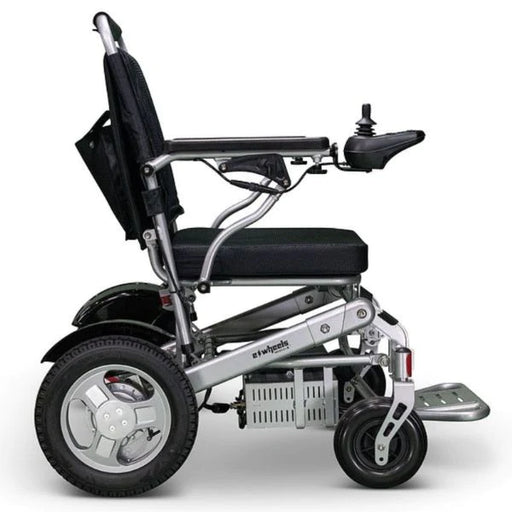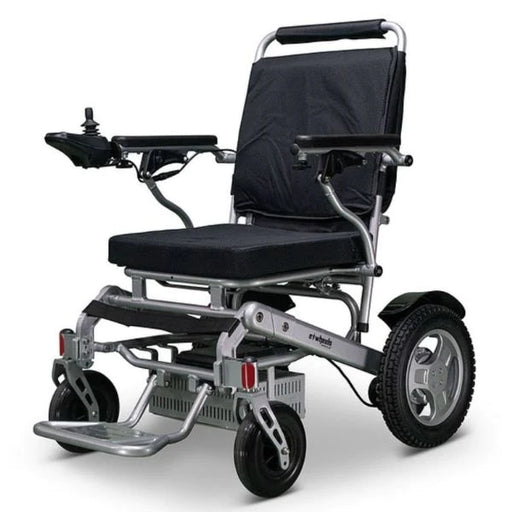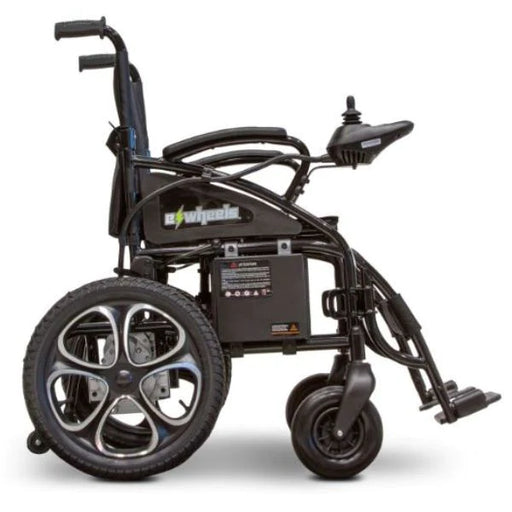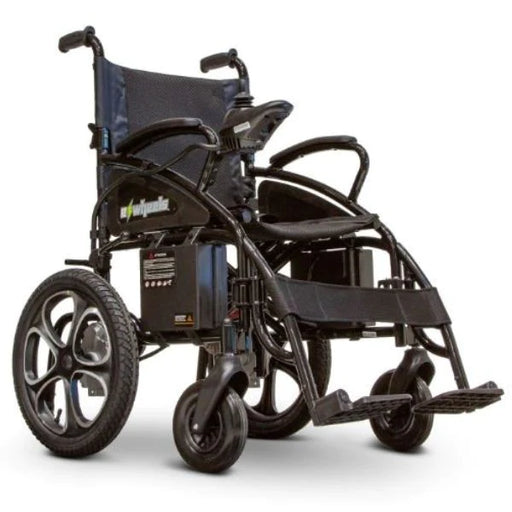Mon-Sun 9AM - 9PM EST
Portable Power Wheelchairs
Portable power wheelchairs have revolutionized the world of mobility aids, providing a newfound sense of independence and freedom to those with limited mobility. These battery-operated devices are designed for individuals who require assistance in moving around, both indoors and outdoors. With an array of options available in the market, portable power wheelchairs have become an essential tool to enhance the quality of life for many users.
Understanding the different types of power wheelchairs and their unique features is crucial in making an informed decision. Advancements in technology have enabled the development of lightweight, foldable power wheelchairs that are easy to transport and store. Users can now choose from various models based on factors such as weight capacity, turning radius, indoor and outdoor use, and overall budget. Portable power wheelchairs cater to the specific needs and preferences of each individual, making it essential to consider various factors before making a purchase. With the right knowledge and guidance, one can invest in a power wheelchair that not only meets their requirements but also offers enhanced comfort, mobility, and a better quality of life. Power wheelchairs, also known as electric wheelchairs, provide freedom of movement and independence for individuals with limited mobility. These devices are designed with various features that cater to specific needs, enable better mobility, and enhance the user's comfort. There are different types of power wheelchairs available in the market. Some models are designed for traveling and can be easily folded, making them easy to transport. Others are more heavy-duty, providing enhanced durability and a higher weight capacity. Users can choose from a wide range of options based on their requirements. One crucial feature of power wheelchairs is the control system, which often utilizes a joystick. This allows users to navigate the wheelchair with minimal effort. The electric motor supplies power to the wheels, giving users a smooth and efficient ride. Power wheelchairs come with various seating options that cater to the user's needs. Some models offer power seat function options, which can provide adjustments in tilt, recline, or even elevation. This not only adds to the user's comfort but also helps in preventing pressure sores and maintaining proper posture. Weight capacity is another essential aspect to consider. Most standard power wheelchairs have an average weight capacity of around 250 lbs. However, heavy-duty or bariatric wheelchairs can support users weighing up to 700 lbs. In summary, understanding the features of power wheelchairs is crucial to choose the ideal electric wheelchair to meet the user's needs and provide enhanced mobility, comfort, and independence. Power wheelchairs provide enhanced mobility and independence for people with physical disabilities or limitations. These electric-powered chairs come in various forms to cater to the unique needs and preferences of users. Let's explore some of the most common types of power wheelchairs, including front-wheel drive, mid-wheel drive, and rear-wheel drive models. Front-wheel drive power wheelchairs are known for their excellent maneuverability, especially in tight spaces. They provide a smooth ride over uneven terrain, making them suitable for both indoor and outdoor use. Since the drive wheels are located at the front of the chair, it's easier to climb curbs and navigate small obstacles. However, front-wheel drive chairs may be slightly less stable at high speeds compared to mid-wheel and rear-wheel drive wheelchairs. Mid-wheel drive power wheelchairs are popular for their tight turning radius and exceptional stability. Due to their even weight distribution and six-wheel design, they remain stable over uneven surfaces and slopes. This type of chair is ideal for indoor use, as it can easily navigate around furniture and tight spaces. However, mid-wheel drive chairs may tend to fishtail on slick or wet surfaces, and could get stuck in soft terrain more easily than other wheel configurations. Rear-wheel drive power wheelchairs offer a more traditional design and are known for their smooth and stable ride, particularly at higher speeds. They are well-suited for outdoor use, as they can easily navigate various terrains, including grass, gravel, and uneven paths. Rear-wheel drive chairs are often more powerful, making them ideal for users who require a higher weight capacity. On the downside, these wheelchairs have a larger turning radius, which may make them less suitable for tight indoor spaces. In addition to these main drive configurations, power wheelchairs may also be categorized based on their specific features or uses, such as: It's essential to choose the right type of power wheelchair that meets individual needs and preferences to ensure an optimal experience. Consulting with a professional or a medical practitioner can help users determine the best option for their specific mobility requirements. Portable power wheelchairs offer numerous benefits to individuals with mobility challenges. One of the main advantages is their portability. These lightweight electric wheelchairs can be easily folded and transported, making them ideal for users who travel frequently or require mobility assistance in various settings. Their compact design allows for easy storage in vehicle trunks or other small spaces. Another benefit of portable power wheelchairs is their lightweight construction. Made from high-strength materials such as aluminum alloy, these chairs are easy to maneuver and handle, providing users with a high level of independence. This lightweight design also contributes to reduced fatigue for caregivers who need to lift and transport the wheelchair. The enhanced mobility offered by portable electric wheelchairs allows users to navigate through various terrains with ease. From city streets to grassy parks, users can enjoy a smooth and comfortable ride due to the power and versatility of these chairs. This improved mobility can greatly enhance the user's quality of life by allowing them to participate in daily activities without being restricted by their mobility limitations. Moreover, portable power wheelchairs typically offer a variety of features and customization options, catering to the unique needs of each user. Adjustable seat heights, reclining options, and customizable control settings are just a few examples of the personalized features available. These adaptations enable each user to find a comfortable and efficient solution for their specific mobility needs. In summary, portable power wheelchairs provide users with enhanced independence, lightweight construction, improved mobility, and customizable options—all important factors for individuals with mobility challenges. These electric wheelchairs have made it possible for many people to lead more active, fulfilling lives. When selecting a portable power wheelchair, it is essential to consider both the weight of the chair itself and its weight capacity. These factors play a critical role in ensuring user comfort, stability, and safety. The weight of a portable power wheelchair can impact its portability and ease of transportation. Lightweight models are becoming more popular, with some chairs weighing as little as 33 lbs. Such models are easier to lift into a vehicle or fold up for storage. However, it is crucial to strike a balance between portability and durability, as some heavier chairs may offer additional support and stability. Weight capacity refers to the maximum weight that a power wheelchair is designed to support. Typically, weight capacities for portable power wheelchairs range from about 250 lbs to over 700 lbs. It is vital to choose a chair with a weight capacity appropriate for the user's weight and any additional items they may carry, such as a backpack or personal belongings. Keep in mind that as the user's weight approaches the chair's maximum weight capacity, the chair's speed may be compromised. Stability is a crucial consideration when evaluating a chair's weight and weight capacity. A power wheelchair with a higher weight capacity may have a wider base or additional features that enhance stability, especially when riding on uneven terrain or making tight turns. Ensuring that the chair's weight capacity exceeds the user's weight creates a margin of safety and increases the overall stability of the power wheelchair. In summary, it is crucial to consider the weight and weight capacity of a portable power wheelchair in relation to the user's needs and preferences. Balancing portability with stability, along with finding an appropriate weight capacity, helps guarantee a safe and convenient experience for the user. Portable power wheelchairs offer versatility and convenience for users with limited mobility. They are designed to provide a comfortable and user-friendly experience for both indoor and outdoor use. With their compact design and lightweight frames, these wheelchairs are perfect for individuals who need a reliable mobility aid that can easily navigate various settings. Indoor use is one of the primary considerations when choosing a power wheelchair. The compact size of these devices allows for easy maneuverability through tight spaces, such as doorways and hallways. Many models also feature a tight turning radius, making it easier to navigate around furniture and other obstacles in the home. In addition, some portable power wheelchairs are equipped with non-marking tires that prevent any scuffs or marks on the floors. Outdoor use is where portable power wheelchairs can truly shine. They are designed to handle various types of terrain, from smooth sidewalks to more rugged surfaces. With features such as larger wheels, suspension systems, and higher ground clearance, these wheelchairs can easily traverse grassy areas, gravel paths, and unpaved trails. Models designed for outdoor use also tend to have longer driving ranges, allowing users to enjoy extended trips without needing to recharge frequently. When it comes to rugged terrain, a select few portable power wheelchairs are specifically engineered to handle more challenging environments. These wheelchairs may feature enhanced suspension systems, heavy-duty frames, and even specialized tires for optimal traction and stability. Users seeking a wheelchair for outdoor adventures should consider models with these features to ensure a reliable and enjoyable experience in various conditions. In summary, portable power wheelchairs offer numerous benefits to users who require a versatile mobility aid that accommodates both indoor and outdoor use. By carefully selecting a model that meets your individual needs, you can enjoy greater freedom and independence in a wide range of settings. A crucial aspect of portable power wheelchairs is the turning radius, which greatly impacts their maneuverability. The turning radius refers to the distance from the center point between the wheelchair's two drive wheels out to the furthest point on the wheelchair base. A smaller turning radius offers more precise control and makes it easier to navigate in tight spaces. Power wheelchairs with tight turning radii, as low as 20 inches, can turn in a 40-inch space. This capability enables users to easily maneuver through narrow doorways, crowded areas, and tight corners. The minimum diameter necessary for electric wheelchairs, mobility scooters, or reclining wheelchairs is 94 inches. However, more room is always preferable for a smoother navigational experience. Mid-wheel drive (MWD) power wheelchairs often have the smallest turning circles as the user's center of gravity is closest to the chair's center point. This configuration provides a more intuitive feel for the user, making it easier to control the wheelchair. In contrast, front-wheel drive and rear-wheel drive wheelchairs may have larger turning radii, potentially reducing their maneuverability in confined spaces. When purchasing or renting a portable power wheelchair, considering the turning radius is vital as it ensures ease of use and accessibility in various environments. A wheelchair with a tighter turning radius provides improved mobility and a generally smoother user experience. Assessing the turning radius in relation to the intended use and environment can help users find the most suitable power wheelchair for their needs. Traveling with portable power wheelchairs can be a liberating experience, allowing individuals with mobility impairments to explore the world with ease. These lightweight, foldable chairs are designed to be easily transported in various modes of transportation such as planes, trains, and cars. When planning to travel by plane, it is essential to check airline policies for carrying portable power wheelchairs. Some airlines require advance notification or have specific guidelines for Travel Power Wheelchairs. It is crucial to ensure the wheelchair's battery meets the airline's regulations, as some airlines may have restrictions on battery types or sizes. Trains often have designated spaces for portable power wheelchairs, making it easier to board and alight the train. It's advisable to contact the train company ahead of time to reserve a spot and receive assistance from staff if needed. Moreover, some trains even provide charging stations for wheelchairs, ensuring the user's mobility throughout the journey. For car travel, many portable power wheelchairs can fit in the trunk or the back seat, depending on the vehicle's size. Before setting off, it's essential to make sure the wheelchair is adequately secured and doesn't obstruct the driver's view or become a safety hazard in case of sudden stops or sharp turns. Some people invest in a car's hitch carrier or rooftop carrier to transport their wheelchair more easily. Another factor to consider when traveling with a portable power wheelchair is accessibility. Researching and arranging accommodations that are wheelchair-friendly is essential to ensure a smooth trip. Many hotel chains and booking platforms have filters to search for accessible accommodations specifically. Even when visiting tourist attractions, it's essential to check for ramps, elevators, or accessible paths that can accommodate Travel Electric Wheelchairs. It's advised to contact the venue or read visitor reviews to ensure its accessibility. In summary, traveling with portable power wheelchairs can be convenient and enjoyable with proper planning and preparation. From planes and trains to cars, it’s crucial to ensure the wheelchair meets transportation requirements, and accessible accommodations are researched and booked. With these steps in place, individuals can comfortably explore the world with their portable power wheelchair. Power wheelchairs are designed to provide enhanced mobility and independence to individuals with limited mobility. There are several key features that set power wheelchairs apart from traditional manual wheelchairs. Joystick Control: One of the most distinct features of power wheelchairs is the joystick control. This allows users to easily maneuver the chair without requiring the upper body strength needed to propel a manual wheelchair. The joystick can be positioned according to the user's preferences and can be used even by individuals with limited hand dexterity. Tire Options: Power wheelchair tires play a crucial role in ensuring a smooth and comfortable ride. There are three main types of tires found on power wheelchairs: pneumatic, semi-pneumatic, and solid. Pneumatic tires have air-filled chambers that provide a cushioned ride. Semi-pneumatic tires are similar, but with a layer of foam for added durability. Solid tires do not have any air chambers, making them the most maintenance-free option. The choice of tire will depend on the specific needs and preferences of the user. Backrest Support: The backrest in a power wheelchair is designed to provide ample support and comfort. They can be adjusted to suit the user's preference and can be fitted with additional cushioning and support features, if needed. In some models, the backrest can be reclined to ensure a comfortable seating position throughout the day. Power wheelchairs also come in various drive configurations to suit individual preferences and needs. Front-wheel drive power chairs provide increased maneuverability in tight spaces, while mid-wheel drive models are known for their enhanced stability when transitioning over uneven terrain. Rear-wheel drive power wheelchairs are designed for users who require extra stability and power for extended outdoor use. Battery Range: Power wheelchairs are powered by rechargeable batteries that have varying ranges of distance before needing a charge. Usually, most power wheelchairs have a range of 10 to 20 miles per charge, making them perfect for daily use. Battery lifespan will depend on several factors such as usage, weight, and proper maintenance. Overall, power wheelchairs provide users with an increased level of independence and mobility. With various options, configurations, and features available, it is important for users to explore and select the best power wheelchair for their specific needs. When choosing a portable power wheelchair, it's crucial to consider your budget and the warranty options available. A power wheelchair can be an essential investment for those with limited mobility, providing independence and improved quality of life. However, costs can quickly add up, so it's vital to find one that suits both your needs and financial constraints. Setting a budget is the first step when looking to purchase an electric wheelchair. Even the most basic models start at around $1,500, but you can find more affordable options if you look carefully. Some factors to keep in mind while considering the budget include the product weight, maximum weight capacity, additional features, and the cost of potential add-ons or accessories. To find affordable power wheelchairs, consider comparing models from multiple brands and looking for sales or promotions. Online shopping can also help you find better prices or deals for various models. However, you should be cautious about opting for cheap options as quality and safety should not be compromised when it comes to essential mobility equipment. Warranty options are another vital aspect to consider. Most manufacturers offer some level of warranty on their electric wheelchairs, which often varies based on the product's components. Typically, warranties are provided for the frame, electronics, and other critical parts separately. It's essential to pay close attention to warranty policies and choose a manufacturer that offers comprehensive coverage for your peace of mind. To ensure you're getting the best possible wheelchair within your budget, remember that it's always a good idea to research and compare various models in terms of their features, prices, and warranty options. With a little search, you can find a power wheelchair that suits your unique needs while fitting within your financial plan. There are various lightweight folding power wheelchairs available in the market, providing ease of transportation and storage. Some of the top options include: Make sure to research and compare the features of each wheelchair to determine the best option for your needs. Different portable electric wheelchairs come with varying weight capacities. It is crucial to select a wheelchair that can safely accommodate the user's weight. Typically, higher weight capacity wheelchairs may be slightly heavier, but they can still be portable and relatively lightweight. Insurance coverage or Medicare benefits for travel-friendly power wheelchairs may vary depending on the individual's policy and specific medical needs. It is essential to verify with your insurance provider or Medicare to determine if a travel-friendly power wheelchair is covered under your plan. Affordable power wheelchairs with good performance can be found by comparing different brands and models. Forbes Health and Rehabmart.com listings can be helpful in identifying affordable and high-performance wheelchairs. Remember to read customer reviews and gauge the overall value and functionality of each option. Selecting the right electric wheelchair for elderly individuals requires considering factors such as comfort, safety, ease of use, weight capacity, and portability. Assess the individual's needs, physical limitations, and preferences, and make sure to involve them in the decision-making process. Power wheelchairs and motorized wheelchairs refer to the same category of mobility devices designed for those who have difficulty walking. They both use electric motors to enable movement, and they come with various options for customization and comfort. Some people may use the terms interchangeably, but they generally describe the same type of mobility aid.Read more
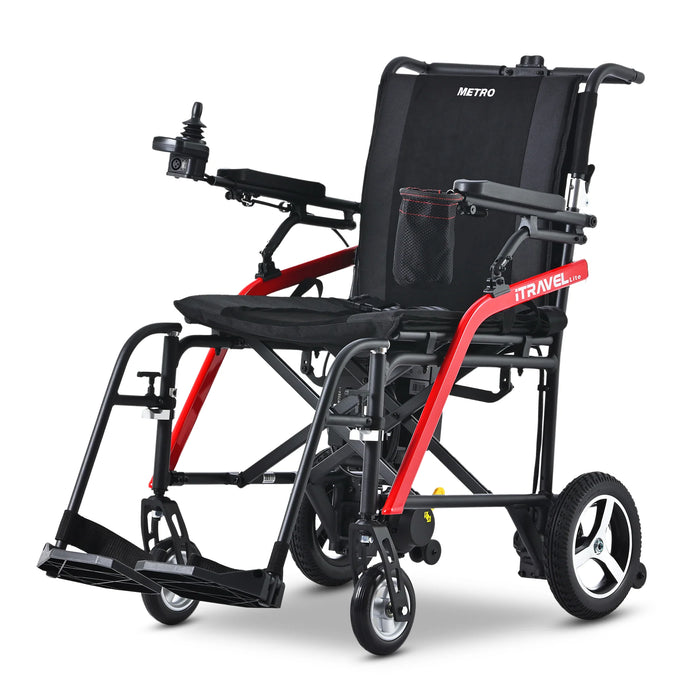
Key Takeaways
Understanding Power Wheelchairs
Different Types of Power Wheelchairs

Advantages of Portable Power Wheelchairs
Choosing the Right Weight and Weight Capacity
Exploring Both Indoor and Outdoor Use

Importance of Turning Radius
Traveling with Portable Power Wheelchairs

Key Features of Power Wheelchairs
Considering Your Budget and Warranty Options
Frequently Asked Questions
What are the top lightweight folding power wheelchairs available?
Which portable electric wheelchairs have the highest weight capacity?
Are there travel-friendly power wheelchairs covered by insurance or Medicare?
What are the most affordable power wheelchairs with good performance?
How to choose the best electric wheelchair for elderly individuals?
What are the key differences between power wheelchairs and motorized wheelchairs?
Filters
-
ComfyGO 6011 Folding Electric Wheelchair
ComfyGOOriginal price $1,549.00Original price $1,549.00 - Original price $1,549.00Original price $1,549.00Current price $688.00$688.00 - $688.00Current price $688.00| /4.83 / 5.0
6 Reviews
ComfyGO 6011 Folding Electric Wheelchair This ComfyGO electric wheelchair is remarkably lightweight, weighing only 67 lbs, making it one of the...
View full details -
Journey Zinger Lightweight Folding Power Wheelchair
Journey Health & LifestyleOriginal price $3,299.00Original price $3,299.00 - Original price $3,299.00Original price $3,299.00Current price $2,899.00$2,899.00 - $2,899.00Current price $2,899.00| /5.0 / 5.0
8 Reviews
Journey Zinger Lightweight Folding Power Wheelchair Say hello to your new best friend, the Journey Zinger® Folding Power Chair Two-Handed Control! ...
View full details -
Journey Air Elite Lightweight Folding Power Chair
Journey Health & LifestyleOriginal price $3,299.00Original price $3,299.00 - Original price $3,299.00Original price $3,299.00Current price $2,999.00$2,999.00 - $2,999.00Current price $2,999.00| /5.0 / 5.0
3 Reviews
Journey Air Elite Lightweight Folding Power Chair At only 26 pounds without the battery, the Journey Air Elite is the lightest power chair in...
View full details -
ComfyGO Majestic IQ-7000 Remote Controlled Folding Electric Wheelchair
ComfyGOOriginal price $2,360.00Original price $2,360.00 - Original price $2,360.00Original price $2,360.00$1,699.00 - $2,149.00$1,699.00 - $2,149.00Current price $1,699.00| /4.89 / 5.0
9 Reviews
ComfyGO Majestic IQ-7000 Remote Controlled Folding Electric Wheelchair The MAJESTIC IQ-7000 is a folding electric wheelchair that's great for trave...
View full details -
Journey Zoomer Lightweight Folding Power Wheelchair
Journey Health & LifestyleOriginal price $3,199.00Original price $3,199.00 - Original price $3,199.00Original price $3,199.00Current price $2,899.00$2,899.00 - $2,899.00Current price $2,899.00| /5.0 / 5.0
8 Reviews
Journey Zoomer Lightweight Folding Power Wheelchair Introducing the Journey Health Zoomer Folding Power Chair, a game changer in the world of perso...
View full details -
Vive Health Compact Folding Power Wheelchair
Vive HealthOriginal price $1,299.99Original price $1,299.99 - Original price $1,299.99Original price $1,299.99Current price $849.99$849.99 - $849.99Current price $849.99| /Vive Health Compact Folding Power Wheelchair The Vive Health Compact Folding Power Wheelchair is perfectly suited for your adventures! Conquer terr...
View full details -
Journey Air Lightweight Folding Power Chair
Journey Health & LifestyleOriginal price $2,299.00Original price $2,299.00 - Original price $2,299.00Original price $2,299.00Current price $1,999.00$1,999.00 - $1,999.00Current price $1,999.00| /5.0 / 5.0
2 Reviews
Journey Air Lightweight Folding Power Chair At only 35 pounds without the battery, the Journey Air is one of the lightest power chairs in the world...
View full details -
ComfyGO X-6 Lightweight Folding Electric Wheelchair
ComfyGOOriginal price $1,789.00Original price $1,789.00 - Original price $1,789.00Original price $1,789.00Current price $899.00$899.00 - $899.00Current price $899.00| /5.0 / 5.0
4 Reviews
ComfyGO X-6 Lightweight Folding Electric Wheelchair This ComfyGO electric wheelchair is remarkably lightweight, weighing in at only 50 pounds, maki...
View full details -
FreeRider USA Luggie Chair Folding Power Chair
FreeRider USAOriginal price $7,000.00 - Original price $7,200.00Original price $7,000.00 - Original price $7,200.00Original price $7,000.00$3,899.00 - $4,099.00$3,899.00 - $4,099.00Current price $3,899.00| /5.0 / 5.0
4 Reviews
FreeRider USA Luggie Chair Folding Power Chair Are you seeking a dependable power chair that is lightweight, durable, and can support a high weight...
View full details -
Metro Mobility iTravel Lite Portable Folding Power Wheelchair
Metro MobilityOriginal price $1,999.00Original price $1,999.00 - Original price $1,999.00Original price $1,999.00Current price $1,700.00$1,700.00 - $1,700.00Current price $1,700.00| /Metro Mobility iTravel Lite Portable Power Wheelchair The Metro Mobility iTravel Lite Portable Power Wheelchair is one of the lightest electric whe...
View full details -
Pathway Mobility Geo Cruiser DX Folding Power Wheelchair
Pathway MobilityOriginal price $2,695.00Original price $2,695.00 - Original price $2,695.00Original price $2,695.00Current price $2,195.00$2,195.00 - $2,195.00Current price $2,195.00| /Pathway Mobility Geo Cruiser DX Folding Power Wheelchair Searching for a lightweight, foldable power wheelchair that's approved for air travel? Loo...
View full details -
Merits Health EZ-GO / EZ-GO Deluxe Power Wheelchair
Merits HealthOriginal price $2,654.85 - Original price $2,694.85Original price $2,654.85 - Original price $2,694.85Original price $2,654.85$1,914.00 - $1,978.00$1,914.00 - $1,978.00Current price $1,914.00| /4.8 / 5.0
5 Reviews
Merits Health EZ-GO / EZ-GO Deluxe Power Wheelchair The Merits Health EZ-GO Travel Power Chair is a great option for mobility while travelin...
View full details -
Merits Health Travel-Ease Folding Power Wheelchair
Merits HealthOriginal price $2,550.98 - Original price $4,605.50Original price $2,550.98 - Original price $4,605.50Original price $2,550.98$1,787.00 - $3,295.00$1,787.00 - $3,295.00Current price $1,787.00| /5.0 / 5.0
4 Reviews
Merits Health Travel-Ease Folding Power Wheelchair Merits Health Travel-Ease Folding Power Chair is easily transportable and storable, so it can tr...
View full details -
Metro Mobility iTravel Plus Folding Power Wheelchair
Metro MobilityOriginal price $1,799.00Original price $1,799.00 - Original price $1,799.00Original price $1,799.00Current price $1,599.00$1,599.00 - $1,599.00Current price $1,599.00| /5.0 / 5.0
1 Review
Metro Mobility iTravel Plus Folding Power Wheelchair The Metro Mobility Itravel Plus Electric Wheelchair is one of the easy and simple portable ele...
View full details -
Pathway Mobility Geo Cruiser LX Folding Power Wheelchair
Pathway MobilityOriginal price $2,795.00Original price $2,795.00 - Original price $2,795.00Original price $2,795.00Current price $2,295.00$2,295.00 - $2,295.00Current price $2,295.00| /Pathway Mobility Geo Cruiser LX Folding Power Wheelchair Are you in need of an ultra-lightweight, collapsible power wheelchair? The Geo Cruiser LX ...
View full details -
Shoprider Jimmie Portable Power Chair
ShopriderOriginal price $5,395.00Original price $5,395.00 - Original price $5,395.00Original price $5,395.00$2,119.00 - $2,299.00$2,119.00 - $2,299.00Current price $2,119.00| /5.0 / 5.0
1 Review
Shoprider Jimmie Portable Power Chair The Shoprider Jimmie electric wheelchair is lightweight, portable and super simple to use. With its wireless ...
View full details -
Pathway Mobility Geo Cruiser Elite EX Folding Power Wheelchair
Pathway MobilityOriginal price $3,195.00Original price $3,195.00 - Original price $3,195.00Original price $3,195.00Current price $2,595.00$2,595.00 - $2,595.00Current price $2,595.00| /Pathway Mobility Geo Cruiser Elite EX Folding Power Wheelchair Are you in the market for a lightweight, folding electric wheelchair that can suppo...
View full details -
Shoprider Smartie Portable Power Chair
ShopriderOriginal price $6,940.00Original price $6,940.00 - Original price $6,940.00Original price $6,940.00Current price $3,069.00$3,069.00 - $3,069.00Current price $3,069.00| /5.0 / 5.0
1 Review
Shoprider Smartie Portable Power Chair The Shoprider Smartie UL8W Power Chair for sale offers remarkable Envirofriendly battery technology - a true...
View full details -
Vive Health Folding Power Wheelchair
Vive HealthOriginal price $2,899.99Original price $2,899.99 - Original price $2,899.99Original price $2,899.99Current price $1,349.99$1,349.99 - $1,349.99Current price $1,349.99| /Vive Health Folding Power Wheelchair Are you looking for a seamless, smooth ride on any surface? Look no further than the Vive Health folding power...
View full details -
ComfyGO Phoenix Carbon Fiber Remote Controlled Folding Power Wheelchair
ComfyGOOriginal price $3,299.00 - Original price $3,399.00Original price $3,299.00 - Original price $3,399.00Original price $3,299.00$2,899.00 - $2,999.00$2,899.00 - $2,999.00Current price $2,899.00| /ComfyGO Phoenix Carbon Fiber Remote Controlled Folding Power Wheelchair Introducing the ComfyGO Phoenix Carbon Fiber Power Wheelchair, a foldable e...
View full details -
ComfyGO X-Lite Ultra Lightweight Foldable Electric Wheelchair
ComfyGOOriginal price $1,799.00 - Original price $1,899.00Original price $1,799.00 - Original price $1,899.00Original price $1,799.00$849.00 - $949.00$849.00 - $949.00Current price $849.00| /ComfyGO X-Lite Ultra Lightweight Foldable Electric Wheelchair The ComfyGO X-Lite is an innovatively designed electric wheelchair, engineered with s...
View full details -
ComfyGO X-7 Lightweight Foldable Electric Wheelchair
ComfyGOOriginal price $1,999.00Original price $1,999.00 - Original price $1,999.00Original price $1,999.00$1,349.00 - $1,599.00$1,349.00 - $1,599.00Current price $1,349.00| /ComfyGO X-7 Lightweight Foldable Electric Wheelchair Gain mobility with the ComfyGo X-7: a lightweight, foldable electric wheelchair with powerful ...
View full details -
EWheels EW-M45 Folding Power Wheelchair
EWheelsOriginal price $3,299.00Original price $3,299.00 - Original price $3,299.00Original price $3,299.00Current price $2,199.00$2,199.00 - $2,199.00Current price $2,199.00| /EWheels EW-M45 Folding Power Wheelchair The EWheels EW-M45 Folding Power Wheelchair is perfect for those with an active lifestyle and limited stora...
View full details -
EWheels EW-M30 Folding Power Wheelchair
EWheelsOriginal price $1,299.00Original price $1,299.00 - Original price $1,299.00Original price $1,299.00Current price $999.00$999.00 - $999.00Current price $999.00| /EWheels EW-M30 Folding Power Wheelchair Searching for an affordable power wheelchair with comfort? The EWheels EW-M30 provides it all. It's a trave...
View full details
Let customers speak for us
from 552 reviewsMy husband loves it. I don't want to speak for him but he likes the scooter a lot. It helps him. He had some anxiety to get a scooter and how that would look, but decided to go for it and hasn't looked back.

I have had my scooter for several months now, and it has given me freedom! I always feel safe, even crossing the street. It has plenty of power, even going up hill. I bought a red one, (per my children's instructions), so I am easily seen. I am so happy with it!!!

I wish i got this product sooner. I finally got my bank account to go through and was super happy. This is a great scooter. The battery lasts for a long time and it's very easy to take apart.

This scooter is a great solid mobility scooter. Very strong build quality. The seat is very comfortable and adjusts right to my needs. Shoutout to Mobility Nest for being such kind people. Would recommend!

This is the only chair I can have because it only weighs like 20 pounds. I didn't think something would be possible but I guess technology is improving these days. Great product quality nonetheless.

I don't even know where to start. I actually first saw this on QVC but they don't sell it anymore. Did some research and ended up here. It took me a couple days to finally pull the trigger, but I am glad I did. I called expressing my concerns, but they were answered immediately. I'm glad I spent my money here. Everything is great, and I would buy again right now if I had the opportunity.

Hello,
I bought the Afiscooter C4 with the Canopy and it was a great decision. It was hard to pull the trigger but I ended up doing their monthly payment options. I've never seen a mobility scooter with this canopy and I could not be more happy with the product that I got.
If anyone is doubting, I would not be worried!

This purchase was a big deal for me and just so different with the interior mount that I was a little extra nervous. I shouldn’t have been, the folks at Mobility Nest were on top of my order every step of the way. After delivery they had arranged a local service technician come by to install the mounting system and show me how to use it. The technician, John, was kind and very knowledgeable considering it was the first one he’d seen. He told me he studied the guides online and the mounting hardware was installed easily with no need to back track.
The Quingo Flyte itself is amazing. There’s some prep to be done before loading and unloading but the baskets and chair arms go on and off easily. The coolest thing is the quingo loading and unloading itself, but the scooter is stable and easy to drive. I’m still working out my per charge range, but that will come in time.
If you are considering this Quingo Flyte I highly recommend that you order through Mobility Nest. I was in safe and caring hands the entire time. So impressed.

The Hoyer lift and rapid delivery exceeded my expectations. In this day of on line purchasing, few purchases are as good as advertised. But this Hoyer lift is well designed, built, priced right, and delivered to meet the buyers needs. Thank you so much.

This scooter is truly amazing, Everyone that sees it, asks me how I like it and I tell them it's absolutely life changing ..
Everything advertised and more..

Iam a BATKA (Bilateral Above The Knees Amputee) and was graciously donated my zinger chair by the Dover Delaware Lions Club. I use it on a daily basis, it helps me tremendously in staying active when I'm not upright walking in my prosthetic legs. It's very durable, comfortable and can go through more difficult terrain. I highly recommend zinger products for people with handicaps.

I bought this scooter in 2008 or 2009, I put thousands of miles on mine when I lived in Uptown Minneapolis and worked in downtown Minneapolis. In the summer months I would ride it to work and back daily, about 3.1 miles each way. In the winter I would keep it at my office and use it in the skyway system all winter, it worked brilliantly. I took toRead more about review stating 10 YEARS ON IT'S STILL A FANTASTIC SCOOTER FOR OUTDOOR AND INDOOR ACTIVITIES on many bike trails around Minneapolis and visited friends up to 5 miles away with complete confidence it would easily make the round trip, I also to it several state fairs and festivals, it always worked great. I had to replace batteries twice but that comes with the territory of an electric vehicle. The support from the factory was excellent, I never had any issues with the scooter and was very happy to pass it along to person with MS who still uses it to this day. I don't know how long it will keep going but for now anyway it shows not signs of stopping.

I walk the dogs and visit neighbors and this works for me. Great turning and I'm happy with it.



